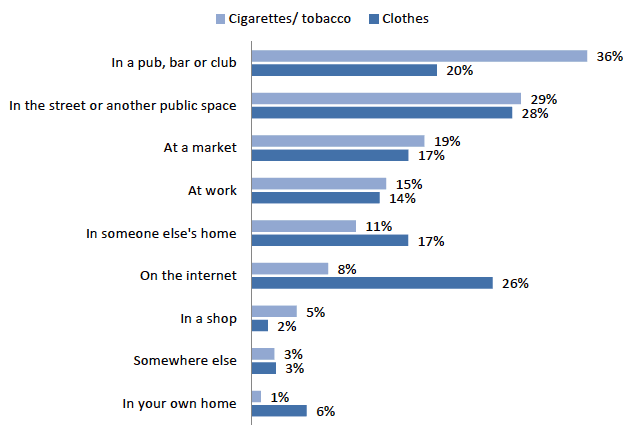Scottish Crime and Justice Survey 2016/17: main findings
This report details the main findings from the Scottish Crime and Justice Survey conducted 2016-2017.
This document is part of a collection
8.4 Focus on fake and smuggled goods
How common was the selling of fake or smuggled goods in 2016/17?
Around six in seven adults in Scotland said that they had not been offered a range of fake or smuggled goods over the last year.
14% of adults said they had been offered any of the following fake or smuggled goods: cigarettes/tobacco, alcohol, DVDs/video games, jewellery, clothes, accessories, electrical goods, children's toys, medicine or something else.
The most common types of fake or smuggled goods offered to adults in Scotland were cigarettes/tobacco (6%) and clothes (4%). Figure 8.4 shows where the most common places cigarettes/tobacco and clothes where offered to respondents.
Figure 8.4: Places where respondents had been offered cigarettes/tobacco and clothes

Base: Adults offered cigarettes/tobacco (90); Adults offered clothes (51). Variable: QFKWHR.
Around three in five adults thought that the selling of fake and smuggled goods was common across Scotland, compared to around one in five adults when they were asked the same question about their local area.
In a similar way to when respondents are asked about their perception of the extent of crime in their local area and across Scotland, respondents were more likely to think that the selling of fake and smuggled goods was more common across Scotland as a whole (60%) rather than in their local area (20%). Most believed that there had been no change in the selling of fake or smuggled goods over the last year in their local area (66%), while 13% thought it was more common and 7% said it was less common than a year ago.
Contact
There is a problem
Thanks for your feedback